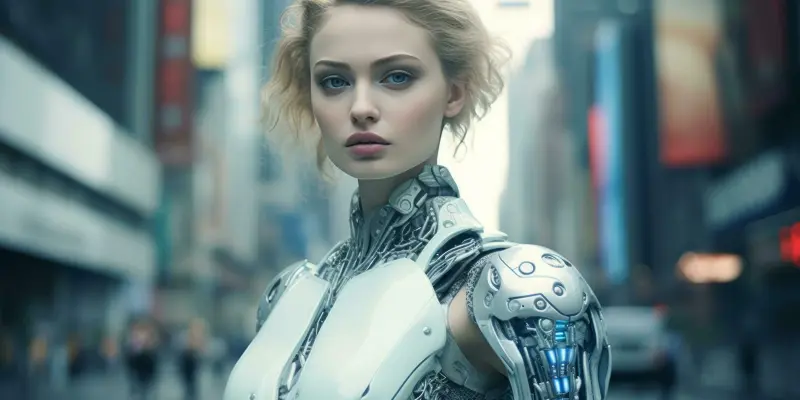CES 2025 emerged as a grand showcase of technological marvels, with human-like robots and cutting-edge AI innovations capturing the audience’s imagination and sparking lively discussions. Among the standout exhibits was Aria by Realbotix, a hypersexualized AI-powered humanoid robot that stirred controversy for its strikingly attractive yet far-from-realistic design. Crafted to serve as an AI companion, Aria’s creators emphasized its potential for alleviating loneliness and providing support in healthcare environments despite the heated debates surrounding its appearance. Yet, they also issued a stern warning about the risks of misuse, highlighting that mishandling Aria could lead to severe consequences like electrocution. Aria’s price range, steeply set between $10,000 and $175,000, matched its advanced technology capable of learning and adapting over time, although it fell short of being described as artificial general intelligence.
CES 2025 was replete with various other innovative robots that showcased the broad applications of robotics and AI. Among them, BeatBot’s solar-powered robotic turtle drew attention for its design aimed at ocean cleaning, demonstrating a commitment to environmental conservation through advanced robotics. Equally impressive was Unitree’s backflipping quadruped robot dog, acclaimed for its agility and potential utility in dynamic environments. Another fascinating exhibit was Mirokai, a vibrant 4.3-foot tall robot equipped with an interactive digital face and capable of navigating using a rollable ball, which underlined the growing trend towards creating socially engaging and interactive machines. These diverse innovations collectively underscore how AI and robotics are being seamlessly integrated into different facets of everyday life, from ecological preservation to providing companionship and entertainment.
Evolving Human-Robot Interactions
CES 2025 was a spectacle of technological wonders, capturing the audience’s attention with human-like robots and groundbreaking AI innovations. One of the most talked-about exhibits was Aria by Realbotix, an AI-powered humanoid robot designed as an extremely attractive companion, which sparked controversy due to its hypersexualized yet unrealistic appearance. The creators highlighted Aria’s potential to combat loneliness and provide healthcare support, while also warning of severe misuse risks, including electrocution. Priced between $10,000 and $175,000, Aria featured advanced technology capable of learning and adapting, though it didn’t quite reach artificial general intelligence.
Other impressive robots showcased at CES 2025 demonstrated the wide range of applications for robotics and AI. BeatBot’s solar-powered robotic turtle was notable for its ocean cleaning capabilities, emphasizing environmental conservation. Unitree’s backflipping quadruped robot dog, praised for its agility, showed potential in dynamic settings. Mirokai, a 4.3-foot tall robot with a digital face and rollable ball navigation, highlighted the trend toward social interaction and engagement in robotics. These diverse innovations illustrate how AI and robotics are integrating into everyday life, from ecological efforts to companionship and entertainment.

